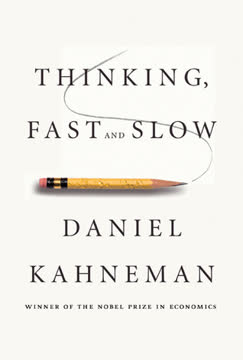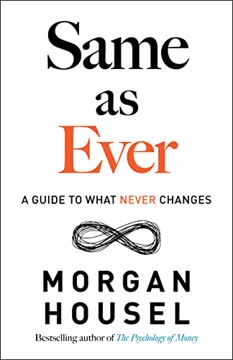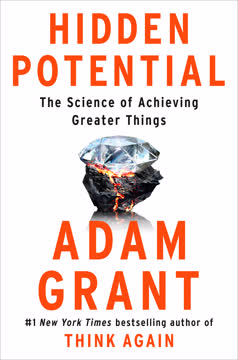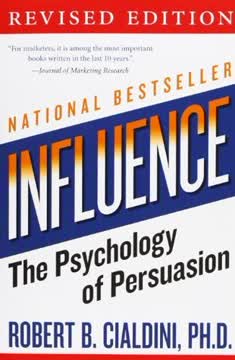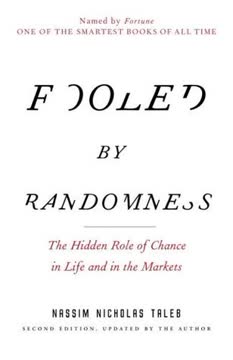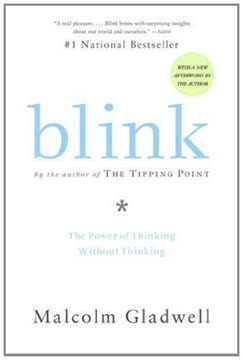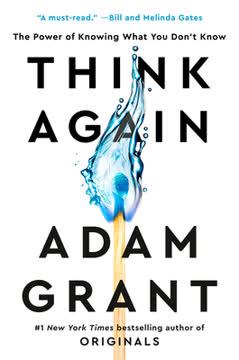つの重要なポイント
1. 人間は予測可能な非合理性を持つが、バイアスを理解することで意思決定を改善できる
「以下の図に示されている2つのテーブルを見てください。」
私たちは「エコン」ではない。 人間は、視覚的錯覚や行動経済学の実験で示されるように、体系的なバイアスや判断の誤りに陥りやすい。私たちはしばしば、誤った方向に導くメンタルショートカット(ヒューリスティック)に頼る。
2つの認知システム。 私たちの脳は2つのシステムを使って動作する:
- 自動システム:速く、直感的で無意識的
- 反射システム:遅く、慎重で意識的
一般的なバイアス:
- アンカリング:初期情報が判断に不釣り合いに影響を与える
- 利用可能性:容易に思い出せる出来事の確率を過大評価する
- 損失回避:損失の痛みは同等の利益の喜びよりも大きい
- 現状維持バイアス:デフォルトの選択肢に固執する傾向がある
- 過信:多くの人が自分が平均以上であると信じている
これらのバイアスを理解することで、選択の自由を保ちながら人々がより良い意思決定をするための介入策を設計することができる。
2. 選択のアーキテクチャは人々が気づかないうちに意思決定を形作る
「選択のアーキテクトは、人々が意思決定を行う文脈を整理する責任を持つ。」
避けられない影響。 すべての意思決定は、選択に影響を与える何らかの文脈の中で提示される。中立的なデザインというものは存在しない。
良い選択のアーキテクチャの主要原則:
- 簡単にする:望ましい行動への障壁を減らす
- マッピングを理解する:選択が結果にどのように結びつくかを人々に理解させる
- デフォルトは重要:多くの人がそれに従うので賢く選ぶ
- フィードバックを与える:人々が選択から学べるようにする
- エラーを予期する:人間がミスをすることを前提に設計する
- 複雑な選択を構造化する:難しい意思決定を分解して整理する
政府、ビジネス、医療などの分野の選択のアーキテクトは、これらの原則を使用して自由を制限せずに人々をより良い意思決定に導くことができる。
3. デフォルトは強力なナッジであり、ポジティブな結果をもたらすために活用できる
「前述の理由から、多くの人は最も労力が少ない選択肢、または最も抵抗が少ない道を選ぶ。」
慣性は強力である。 人々は現状維持バイアスのためにプリセットされた選択肢に固執する傾向があるので、デフォルトの選択肢は結果に大きな影響を与える。
効果的なデフォルトの例:
- 退職貯蓄プランへの自動加入
- オプトアウト方式の臓器提供ポリシー
- デフォルトのプリンター設定としての両面印刷
- カフェテリアでの健康食品の配置
良いデフォルトの設計:
- 多くの人が慎重に考えた場合に選ぶであろうデフォルトを選ぶ
- 選択の自由を保つためにオプトアウトを容易にする
- 選択のアーキテクトだけでなく、すべての利害関係者の利益を考慮する
- デフォルトの選択肢とその理由を透明にする
よく設計されたデフォルトは、貯蓄、健康、環境保護などの分野で自由を制限せずに結果を劇的に改善することができる。
4. 社会的影響は行動を強く形作り、善のために活用できる
「人間は他の人間によって簡単にナッジされる。」
私たちは群れに従う。 人々は他者の行動や信念に強く影響されることが多く、しばしばそれに気づかない。
社会的影響の形態:
- 情報:他者の行動は何が最善か、何が普通かを示す
- 同調圧力:私たちは適合し、非難を避けたい
- 社会的証明:適切な行動を決定するために他者を参考にする
社会的規範の活用:
- 大多数のポジティブな行動を強調する(例:「10人中9人が税金を期限内に支払っている」)
- 記述的規範(人々が実際に行っていること)と規範的規範(人々が承認すること)を使用する
- 望ましい行動をより目立たせる
- 否定的な行動を無意識に正当化しないように注意する
社会的影響を理解し活用することで、エネルギー節約、税金の遵守、健康的な行動などの分野で大規模な行動変化をもたらすことができる。
5. 良い選択を容易にし、悪い選択を難しくすることは効果的なナッジ戦略である
「ある行動や活動を奨励したい場合、それを簡単にする。」
摩擦を減らす。 良い行動への小さな障壁を取り除くことで大きな影響を与えることができる。逆に、望ましくない選択に摩擦を加えることでそれを抑制することができる。
簡単にするための戦略:
- プロセスやフォームを簡素化する
- 明確でシンプルな言葉を使う
- チェックリストやリマインダーを提供する
- 良い選択肢をより目立たせ、アクセスしやすくする
- ポジティブな行動を自動化する(例:自動貯蓄預金)
例:
- オンラインショッピングのワンクリック注文
- 事前に記入された税務フォーム
- オプトアウト方式の臓器提供
- カフェテリアで目の高さに健康食品を配置する
選択環境を慎重に設計することで、自由を制限せずに人々をより良い意思決定に導くことができる。
6. スマートな情報開示とスラッジの削減は、消費者の意思決定を改善する
「石油、大豆、綿などのような組織化された商品市場を作るためには、品質の標準化された単位が必要である。」
情報は力である。 明確で標準化され、容易にアクセスできる情報を提供することで、消費者はより良い選択をすることができる。
スマートな情報開示の原則:
- 情報を機械可読で標準化する
- 主要な意思決定要因に焦点を当てる
- 選択肢間の比較を容易にする
- 可能な限り個別化された情報を提供する
スラッジの削減:
- 不要な書類や官僚主義を排除する
- 複雑なプロセスを簡素化する
- 望ましくない取り決めからのオプトアウトを容易にする
- 隠れた手数料や隠された属性を避ける
情報開示を改善し摩擦を減らすことで、消費者にとってより良い市場を作り、真の価値を提供する企業を報いることができる。
7. リバタリアン・パターナリズムは自由を保ちながらより良い選択を導く
「リバタリアン・パターナリズムは、選択がブロックされたり、囲い込まれたり、著しく負担をかけられたりしないため、比較的弱く、柔らかく、非侵襲的なパターナリズムである。」
ナッジ、押し付けない。 選択のアーキテクチャを変更することで、自由を制限せずに人々がより良い選択をするのを助けることができる。
主要原則:
- 常に選択の自由を保つ
- オプトアウトを容易かつ低コストにする
- ナッジとその理由を透明にする
- 価値を押し付けるのではなく、人々が自分の目標を達成するのを助ける
批判への対応:
- 透明で容易に回避できる場合、操作的ではない
- 教育やインセンティブを補完することができる
- ナッジはしばしば必要であり、何らかの選択のアーキテクチャは避けられない
- 複雑な選択を管理可能にすることで個人をエンパワーメントする
リバタリアン・パターナリズムは、自由放任主義と厳格な規制の中間の立場を提供し、自由を保ちながら人々を助ける。
8. ナッジは退職貯蓄や気候変動などの主要な社会問題に対処するのに役立つ
「簡単のために、ここでは排出削減に焦点を当てているが、残念ながら世界は時間とともに気候変動の影響に対処する方法を見つけなければならない。」
大きな問題に取り組む。 ナッジだけでは主要な課題を解決できないが、包括的な戦略の一部として強力な役割を果たすことができる。
退職貯蓄のナッジ:
- 401(k)プランへの自動加入
- 時間とともに貢献率を上げる
- よく設計されたデフォルトの投資オプション
- プランオプションの簡素化と標準化
気候変動のナッジ:
- デフォルトの選択肢としてのグリーンエネルギー
- エネルギー使用のフィードバックと社会的比較
- 簡素化されたカーボンフットプリント情報
- 持続可能な選択をより目立たせ、便利にする
アプローチの組み合わせ:
- ナッジを従来の政策ツール(税金、規制など)と併用する
- 行動洞察を活用して他の政策の効果を向上させる
- 個人と組織の意思決定の両方に対処する
- 介入を継続的にテストし、改善する
ナッジは万能薬ではないが、複雑な社会的課題に対処するための他の努力を補完する低コストで自由を保つ方法を提供する。
最終更新日:
FAQ
What's Nudge: Improving Decisions about Money, Health, and the Environment about?
- Behavioral Economics Focus: The book delves into how behavioral economics can enhance decision-making in areas like money, health, and the environment. It highlights the impact of cognitive biases on human choices.
- Nudging Concept: Introduces "nudging," which involves subtle changes in choice presentation to encourage decisions that align with individuals' self-interest without limiting their freedom.
- Libertarian Paternalism: Advocates for designing choices that guide people towards better decisions while preserving their autonomy, a concept known as "libertarian paternalism."
- Choice Architecture: Emphasizes the structuring of choices to influence behavior positively, demonstrating how small changes can lead to significant improvements in outcomes.
Why should I read Nudge?
- Practical Applications: Offers insights applicable to everyday life, from personal finance to public policy, helping readers make better choices and influence others positively.
- Influential Ideas: The book has shaped public policy and business practices globally, providing a deeper understanding of behavioral economics' societal impact.
- Engaging Writing Style: Thaler and Sunstein present complex ideas accessibly, using real-world examples to illustrate principles, making the book enjoyable and informative.
What are the key takeaways of Nudge?
- Nudges Matter: Small changes in choice presentation can significantly alter behavior, such as placing healthier food at eye level to encourage better eating habits.
- Defaults Influence Decisions: Highlights the power of default options, showing that people often stick with defaults, which can promote beneficial behaviors like saving for retirement.
- Awareness of Sludge: Introduces "sludge," unnecessary obstacles that hinder good decision-making, and suggests reducing sludge to improve overall welfare.
What is libertarian paternalism in Nudge?
- Definition: Libertarian paternalism is about influencing behavior to improve lives while allowing freedom of choice, helping individuals make better decisions without restricting options.
- Practical Examples: Examples include automatic enrollment in retirement plans, which increase participation while allowing opt-out, balancing guidance with autonomy.
- Balancing Freedom and Guidance: Emphasizes creating environments where people can thrive without feeling coerced, respecting individual autonomy while guiding towards better choices.
How does choice architecture work in Nudge?
- Designing Choices: Involves structuring choices to positively influence decisions, using defaults, option arrangement, and information framing.
- Impact of Context: Context significantly affects outcomes; for example, food display in cafeterias can influence eating habits.
- Examples of Effective Architecture: Includes reminders and prompts to encourage desired behaviors, helping individuals make better decisions with less effort.
What is a nudge according to Nudge?
- Definition of a Nudge: A nudge is a choice architecture aspect that predictably alters behavior without forbidding options or changing economic incentives.
- Examples of Nudges: Includes placing healthier food at eye level or using reminders for retirement savings, guiding better choices without restricting freedom.
- Nudges vs. Coercion: Emphasizes that nudges are gentle influences, not coercive measures like taxes or bans, aiming to positively influence behavior.
How do biases affect decision-making in Nudge?
- Present Bias: Discusses how individuals prioritize immediate rewards over long-term benefits, leading to poor financial decisions like under-saving for retirement.
- Loss Aversion: Highlights the preference to avoid losses over acquiring equivalent gains, resulting in cautious behavior like avoiding stock market investments.
- Cognitive Overload: Too many choices can overwhelm individuals, leading to decision paralysis; simplifying choices can encourage better decision-making.
What is the "Save More Tomorrow" program mentioned in Nudge?
- Automatic Increases: A strategy to help employees increase retirement savings by committing to save a portion of future salary increases, easing the saving process.
- Behavioral Insights: Leverages the tendency to avoid loss by saving from future raises, reducing financial strain and increasing savings rates.
- Successful Outcomes: Demonstrates significant savings rate increases among participants, showcasing the effectiveness of nudging in financial decision-making.
How does Nudge address the issue of organ donation?
- Presumed Consent vs. Explicit Consent: Discusses systems like presumed consent (automatic donor unless opted out) and explicit consent (active registration required).
- Prompted Choice: Advocates for a system encouraging individuals to declare preferences at key moments, like driver's license applications, increasing donor registration.
- Family Involvement: Emphasizes involving families in decision-making to respect potential donors' wishes, leading to higher organ donation rates.
What are some real-world applications of the ideas in Nudge?
- Public Policy: Governments use nudges to improve public health, tax compliance, and environmental behaviors, demonstrating behavioral insights' effectiveness in policy-making.
- Business Practices: Companies enhance customer experiences with nudges, like simplifying purchasing processes, leading to increased satisfaction and loyalty.
- Personal Finance: Individuals apply Nudge principles to financial decisions, like automatic savings plans, improving financial well-being and reducing stress.
What is sludge and how does it affect decision-making in Nudge?
- Definition of Sludge: Refers to unnecessary obstacles or friction hindering beneficial outcomes, like complicated forms or lengthy processes.
- Impact on Choices: Sludge deters good decisions, such as applying for benefits, and reducing it can improve access to important resources.
- Examples of Sludge: Includes complicated tax forms or difficult subscription cancellations, leading to frustration and disengagement from beneficial programs.
What are the best quotes from Nudge and what do they mean?
- “Nudge helps us understand our weaknesses...”: Highlights the focus on recognizing behavioral biases and strategies to overcome them, emphasizing decision-making processes.
- “If you want to encourage some behavior...”: Encapsulates the principle of removing barriers to facilitate better choices, stressing the importance of understanding obstacles.
- “Everything matters.”: Reflects the belief that small details in choice architecture significantly impact behavior, underscoring thoughtful design's importance in influencing decisions.
レビュー
ナッジは、行動経済学と選択アーキテクチャに関する核心的なアイデアで称賛される一方、賛否両論の評価を受けている。多くの人々は、この本が洞察に富み、特に公共政策などのさまざまな分野に適用可能であると感じている。批評家は、アメリカ中心の例や難解な文体に言及している。あるレビューアーは、この本の超党派的なアプローチと実践的な提案を評価する一方で、他の人々は特定の提案を論争の的と見なしている。全体として、読者は選択の提示方法における微妙な変化が意思決定に大きな影響を与えることを探求するこの本の価値を認めているが、その長さと詳細に苦労する人もいる。
Similar Books
